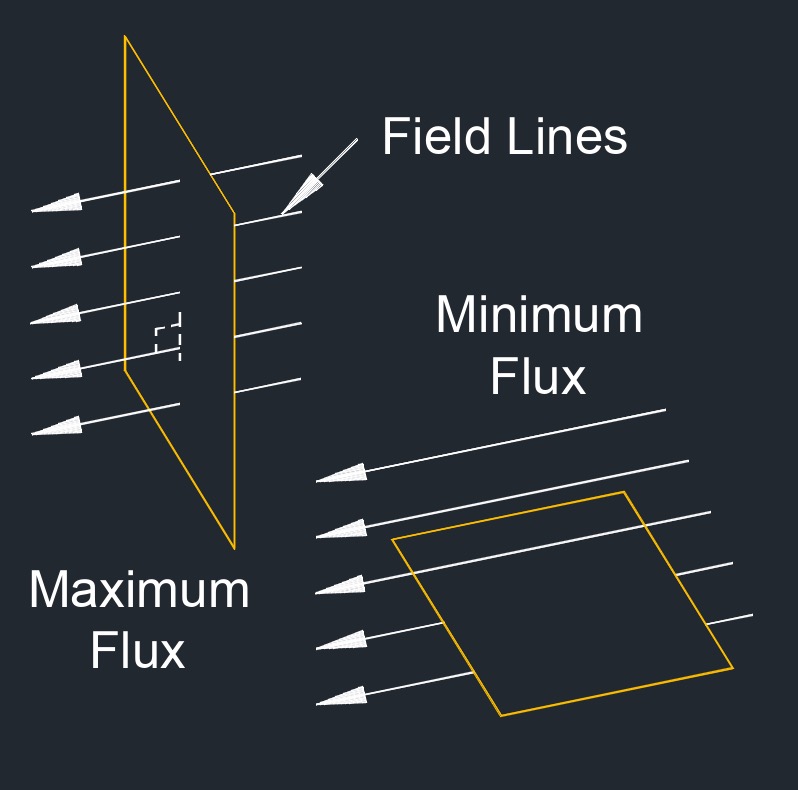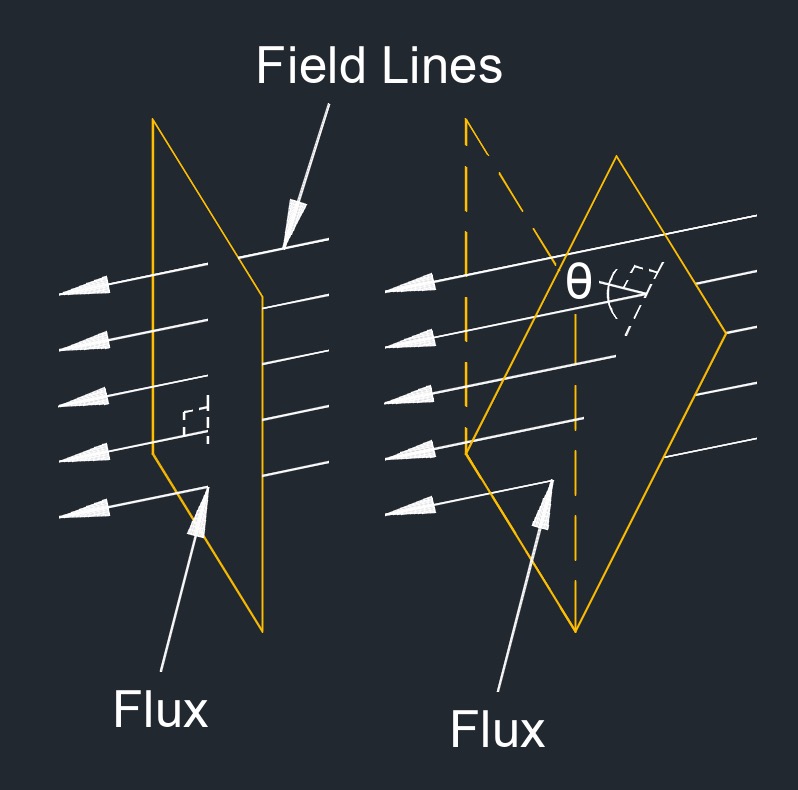Electric Flux

 Electric flux, abbreviated as \( \phi_e \), describes the quantity of electric field passing through a given surface. It represents the total number of electric field lines passing through a surface and provides a measure of the strength of the electric field through that surface.
Electric flux, abbreviated as \( \phi_e \), describes the quantity of electric field passing through a given surface. It represents the total number of electric field lines passing through a surface and provides a measure of the strength of the electric field through that surface.
Electric flux is a useful concept for analyzing electric fields and their interactions with charged objects and surfaces. It helps in understanding the distribution of electric field lines, determining the strength of the electric field, and applying principles such as Gauss's law to solve various electrostatic problems.
Electric Flux FormulaIf the electric field and the area vector are parallel (\(\theta = 0^o\)), the flux is maximized. If they are perpendicular (\(\theta = 90^o\)), the flux is zero. |
||
|
\( \phi_e = E \; A \; cos( \theta) \) (Electric Flux) \( E = \phi_e \;/\; A \; cos( \theta) \) \( A = \phi_e \;/\; E \; cos( \theta ) \) |
||
| Symbol | English | Metric |
| \( \phi_E \) (Greek symbol phi) = electric flux | - | \(N-m^2\;/\;C\) |
| $ E = electric field vector | - | $V\;/\;m$ |
| $ A $ = area vector | - | $m^2$ |
| $ cos ( \theta ) $ = he angle between the electric field lines and the normal (perpendicular) to the surface |
- | - |

Tags: Electrical